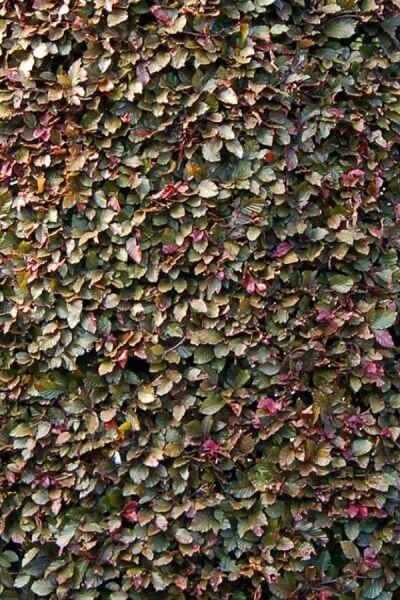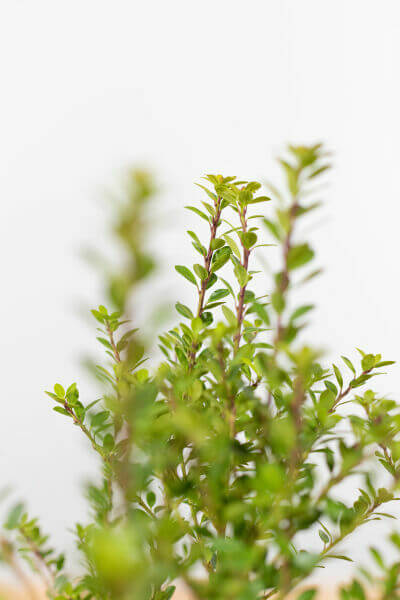Fast-growing Evergreen Hedge Plants
Boost your garden's allure with lavish hedge varieties such as Yew (Taxus), Thuja, Laurel, Photinia, and Bamboo, celebrated for their structural integrity and environmental advantages.
Yew and Thuja offer evergreen coverage and winter season resilience, while Laurel uses rapid development and broad, fragrant leaves.
Photinia includes seasonal appeal with its dynamic red foliage, and Bamboo lends a low-maintenance, tranquil ambiance.
These hedges improve air quality, minimize noise, and create tranquil, private spaces.
Proper planting, spacing, and upkeep make sure vigorous growth and eco-friendly harmony.
Explore how these rich ranges can raise your garden's appeal and wellness.
Secret Takeaways
Transform Your Garden With Lush Hedge Varieties
- Select Yew for its dense, evergreen development and unequaled longevity.
- Choose Laurel for its fast development and broad leaves, making sure fast personal privacy.
- Choose Photinia for its vibrant seasonal foliage, which turns a striking dark red.
- Utilize Bamboo for a low-maintenance, winter-hardy hedge with aesthetic appeal.
- Space plants 2-3 per meter and prune routinely for ideal development and health.
Popular Hedge Plants
When changing a garden with lavish hedge ranges, it's important to consider popular hedge plants such as Yew, Thuja, Laurel, and Photinia due to their unique characteristics and benefits.
Yew (Taxus) is highly respected for its durability and thick, green development, making it a prime option for sustaining landscapes.
Thuja is kept in mind for its evergreen foliage and robust winter season durability.
Photinia adds seasonal vibrancy with red leaves that darken in time, producing dynamic visual appeal.
Laurel offers quick development and aromatic, broad leaves, suitable for quick privacy.
Additionally, Bamboo is an excellent option for atmosphere, providing a low-maintenance, winter-hardy option that improves the garden's aesthetic with its sophisticated, swaying walking canes.
These choices accommodate a range of horticultural needs and choices.
Advantages of Garden Hedges
Garden hedges provide a multitude of advantages, making them a valuable addition to any landscape. These natural barriers are affordable to implement and provide substantial wind defense, boosting air blood circulation and adding to sound reduction. The thick foliage of hedges like Thuja and Beech guarantees privacy by blocking visibility, producing a serene and remote environment.
Hedges also play an essential function in microclimate policy, supplying a steady environment that promotes plant development and reduces temperature level changes. Their detailed leaf structures filter contaminants, enhancing air quality and contributing to a much healthier garden environment.
Additionally, hedges stand out in noise decrease, soaking up and deflecting sound waves to lower ambient noise levels. This double functionality of offering both acoustic and visual personal privacy boosts the total harmony and aesthetic appeal of any garden.
Planting and Maintenance Tips
For an effective hedge, careful preparation of the planting area is crucial. Ensure the soil has appropriate pH and drainage to support strong root advancement.
Space the plants properly for the chosen types. Water the hedge frequently during its preliminary growth stage, changing as needed with seasonal modifications.
Carry out a methodical bug control and disease avoidance method, utilizing chemical or organic treatments when needed. Frequently check for aphids, mites, and fungal infections.
Apply mulch to retain moisture and suppress weeds. Seasonal pruning promotes thick development and air blood circulation, necessary for plant health.
Following these guidelines will help you cultivate a dynamic, well-kept hedge that boosts the appeal of your garden.
Spacing and Cutting Standards
Spacing and Cutting Standards
Correct spacing and cutting are crucial for cultivating healthy, visually appealing hedges. Adequate spacing makes sure each plant receives enough nutrients, light, and airflow.
Follow these guidelines for optimal hedge maintenance:
- Spacing: Position hedge plants 2-3 plants per meter to motivate robust development.
- Pruning Techniques: Regular pruning is necessary for maintaining desired hedge height and shape. Cut brand-new development in summer and cut back older wood during winter.
- Seasonal Care: Adjust trimming schedules and approaches according to seasonal requirements to make sure plant health.
- Hedge Height: Frequently screen and trim to maintain the wanted hedge height and attain consistent aesthetic appeals.
Following these steps will guarantee your hedge prospers, improving both the appeal and functionality of your garden.
Picking the Right Hedge
Picking the Right Hedge
Selecting the appropriate hedge involves evaluating elements such as mature height, foliage density, and environmental strength. Successful hedge plant selection needs comprehending each species' growth attributes and site-specific adaptability.
For example, Yew (Taxus) offers exceptional durability and thick growth, while Thuja is significant for its winter strength. Furthermore, considering upkeep requirements is crucial; fast-growing types like Laurel or Privet demand routine trimming, whereas low-maintenance choices like Bamboo or Ivy might be more effective for those seeking minimal upkeep.
Environmental factors such as soil type, light accessibility, and wetness conditions must likewise direct the selection procedure. This cautious approach guarantees the chosen hedges will prosper, providing both functional and aesthetic advantages to the garden landscape.
Delivery and Planting Recommendations
To guarantee your hedge plants flourish, they need to be delivered by specialized couriers and planted promptly upon arrival.
Follow these important actions for successful planting:
- Soil Preparation: Enrich the soil with raw material to enhance drain and nutrient material.
- Planting Depth: Produce a trench two times the width and equivalent to the depth of the root ball.
- Watering Techniques: Water completely after planting, keeping the soil consistently damp however not filled.
- Mulching: Use a layer of mulch to retain moisture and suppress weeds.
Client Assistance and Service
Given the essential role of timely assistance in horticultural pursuits, our consumer support team is offered 6 days a week through telephone, e-mail, and social media to provide skilled suggestions and swiftly resolve any concerns. Their dedication to quick reaction times makes sure client satisfaction by resolving queries related to plant health, optimal planting techniques, and upkeep schedules.

-------------------
Within 24 hours
This thorough support group, strengthened by an outstanding 9.3/ 10 consumer ranking, highlights our dedication to boosting the gardening experience for every client.
Frequently Asked Questions
How Long Does It Take for Hedge Plants to Establish?
Hedge plants usually require one to three years to become completely established, with the precise duration varying by species and growing conditions.
Effective care during this critical period is essential for robust development. Constant watering, alert weed control, and proper fertilizer application are critical in promoting strong root development.
For example, fast-growing types like Laurel may establish quicker, while slower-growing varieties such as Yew may take longer. Thorough upkeep speeds up the establishment procedure, leading to healthy and dense hedges.
What Are the Best Hedge Plants for Personal Privacy?
The concern of the best hedge plants for privacy includes examining evergreen and deciduous choices.
Evergreen hedges like Thuja, Laurel, and Cypress offer year-round coverage, making sure constant privacy.
In contrast, deciduous hedges such as Beech use seasonal privacy, shedding leaves in colder months.
Secret maintenance tips for personal privacy hedges include regular trimming, fertilizing in spring, and proper spacing-- typically 2 to 3 plants per meter.
In addition, consistent watering and diligent weed removal are essential for promoting healthy, dense growth.
Can Hedge Plants Bring In Wildlife to My Garden?
Yes, hedge plants can draw in wildlife to your garden by providing necessary advantages like shelter, food, and nesting websites, thus boosting local biodiversity. Yew, holly, and laurel are excellent for attracting birds, while ivy supports a variety of pests.
However, it is essential to note that there are some downsides, such as increased maintenance to manage bugs and regular maintenance. Thoroughly choosing and keeping hedge varieties can assist balance these disadvantages and benefits, ultimately promoting a sustainable and vibrant ecosystem in your garden.
Are There Any Flowering Hedge Plants Available?
Yes, there are flowering hedge plants offered that can improve the charm of your garden.
For example, Elaeagnus, also referred to as Olive Willow, produces fragrant white flowers in the fall, adding a touch of elegance.
Photinia, another popular choice, showcases lively red leaves that grow into an abundant green, developing a vibrant visual impact throughout the seasons.
To make sure these plants grow, it's important to practice appropriate pruning strategies and seasonal upkeep, such as cutting new growth in the summertime and cutting down in the winter season.
These procedures will help maintain the health and aesthetic appeal of your flowering hedges.
How Do I Prevent Pests in My Hedge Plants?
To prevent insects in hedge plants, employ natural pest control methods and preserve appropriate hedge care. Present helpful pests like ladybugs, which victimize damaging bugs, to develop a well balanced environment.
Frequently examine your hedges for indications of problem and without delay get rid of any afflicted parts to avoid the spread. Guarantee the health of your hedges by applying balanced fertilizers and providing appropriate water.
Make use of mulching to keep soil moisture and appropriate spacing to decrease plant stress and promote robust development. These practices jointly help in lessening insect issues and maintaining a healthy hedge.
Conclusion
In essence, picking the best hedge varieties such as Yew, Thuja, and Laurel can transform any garden into a serene sanctuary. These plants provide year-round plant, enhance aesthetic appeal, and deal practical advantages like sound decrease and wind security.
Correct planting techniques, accurate spacing, constant watering, and seasonal trimming are vital for optimum development.
Trusted shipment services and expert customer assistance guarantee a smooth experience from purchase to planting, making it easier than ever to elevate your outside space.
Garden hedges offer a plethora of benefits, making them an important addition to any landscape. These natural barriers are economical to Article source implement and supply considerable wind security, boosting air flow and contributing to sound reduction. The dense foliage of hedges like Thuja and Beech makes sure privacy by blocking exposure, developing a peaceful and remote environment.

Pruning Techniques: Regular pruning is necessary for preserving preferred hedge height and shape. Trim brand-new growth in summer and cut back older wood throughout winter.